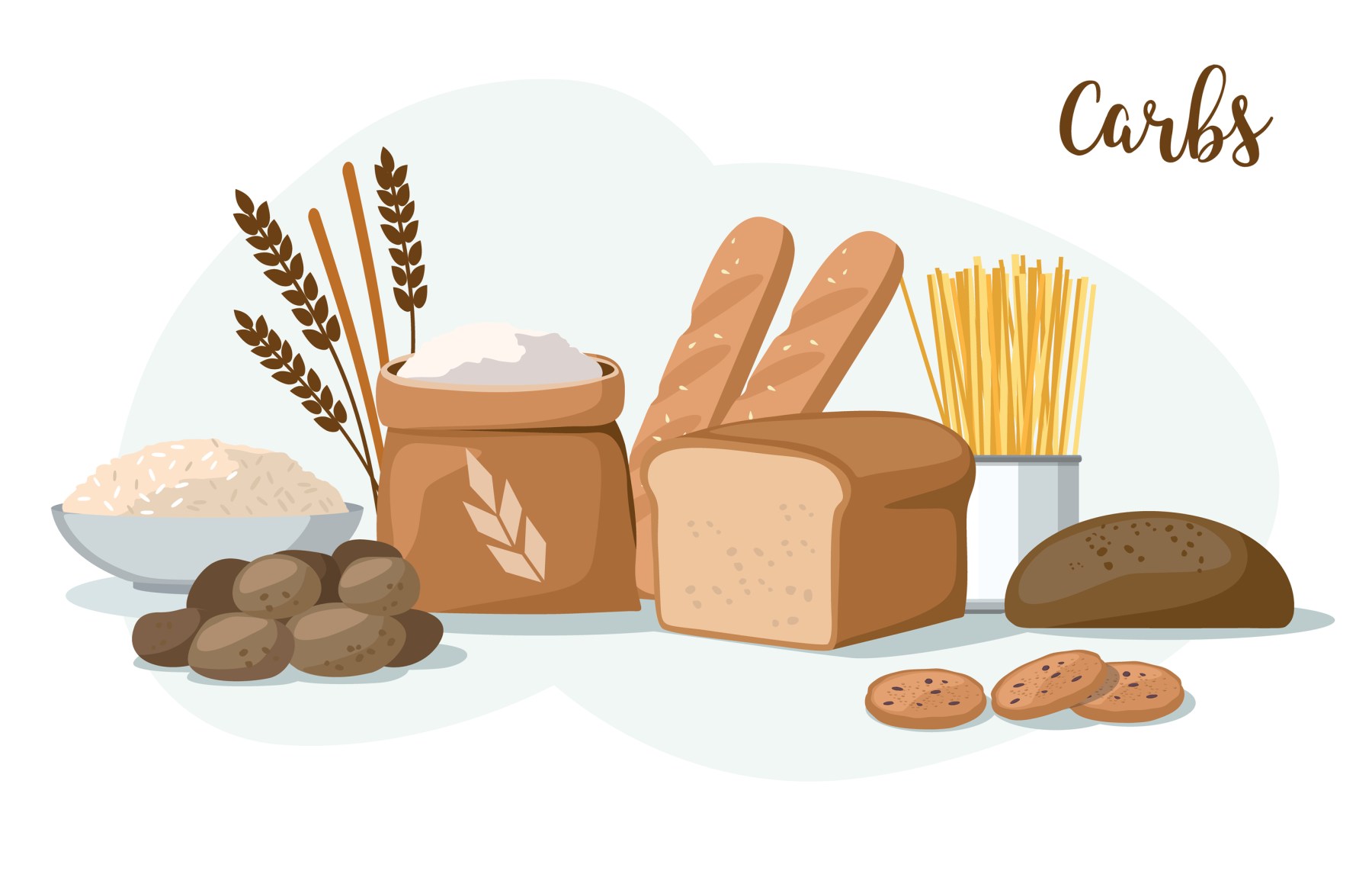
Understanding Carbohydrates
Written & Medically Verified by Dr. Aliya Kassamali, PharmD
Reviewed by Shirzad Chunara, BSc. Dietetics, MHSc Community Health (Nutrition)
Many of us try our best to avoid processed sugar from foods like desserts and sodas because it is linked to weight gain and diabetes. Sugar is classified as a carbohydrate, but there are also 2 other types of carbohydrates to be aware of: starch and fiber.
Fast Fact: 3 main types of carbohydrates are sugar, starch, and fiber.
If you are confused about carbohydrates, you are not alone. We have answers to commonly asked questions!
Q: Are all carbohydrates bad?
A: Surprisingly, no. Evidence is showing us that intake of fiber from foods, like fiber cereals and fruits, are actually associated with lowered diabetes risk.
In the past, sugar has been the main culprit for weight gain, but recently, a large study found that eating high amounts of starch also promotes weight gain, with potatoes being the number one source. There is also some early evidence that a diet high in starch and low in fiber increases the risk of type 2 diabetes.
Q: Why is fiber a good carbohydrate?
A: Foods high in fiber slow down the absorption of sugar to stop your blood-sugar levels from spiking after eating. It also helps you feel full, which can help reduce the amount you eat. This can lower your risk for diabetes and weight gain.
Q: How do I know which fiber-rich foods to choose?
A: Examples of foods high in fiber include vegetables, fruit, whole grains (like bulgur), wheat, berries, steel-cut oats, quinoa, and brown rice. Look at labels and ingredients to help you buy whole-grain bread and cereal.
Q: What should I look out for on nutrition labels?
A: When looking at the nutrient label on the back of a package, keep an eye out for the ratio of total carbohydrates to fiber. Try to avoid foods that have more than 10 grams of total carbohydrate to 1 gram of fiber, 10:1 ratio.
An example:
| Total Carbohydrates 32g |
| Dietary Fiber 2g |
| Sugars 4g |
In this instance, there are 2 grams of fiber to 32 g of total carbohydrates, which is greater than the 10:1 ratio. This is something you should avoid eating! Also, if you take the total carbohydrate amount (32 g) and subtract the fiber (2 g) and sugar (4 g) amounts, you will see that this product is high in starch, which is also not good for you: 32-2-4 = 26 g of starch.
 Bottom line: Not all carbohydrates are bad. Avoid foods high in sugar and starch, but do choose foods high in fiber! Stick to fruits, vegetables, and whole grains. Even though some fruits may be high in sugar, they are also high in fiber and other nutrients, which are good for your body.
Bottom line: Not all carbohydrates are bad. Avoid foods high in sugar and starch, but do choose foods high in fiber! Stick to fruits, vegetables, and whole grains. Even though some fruits may be high in sugar, they are also high in fiber and other nutrients, which are good for your body.
References:
1. AlEssa, H. B., Bhupathiraju, S. N., Malik, V. S., Wedick, N. M., Campos, H., Rosner, B., Willett, W. C., & Hu, F. B. (2015). Carbohydrate quality and quantity and risk of type 2 diabetes in US women. The American journal of clinical nutrition, 102(6), 1543–1553. https://doi.org/10.3945/ajcn.115.116558
2. Smith, J. D., Hou, T., Ludwig, D. S., Rimm, E. B., Willett, W., Hu, F. B., & Mozaffarian, D. (2015). Changes in intake of protein foods, carbohydrate amount and quality, and long-term weight change: results from 3 prospective cohorts. The American journal of clinical nutrition, 101(6), 1216–1224. https://doi.org/10.3945/ajcn.114.100867
3. Tufts University. (2020, February 6). Choose the Right Carbs to Help Control Your Diabetes Risk. Tufts Health & Nutrition Letter. https://www.nutritionletter.tufts.edu/diabetes/choose-the-right-carbs-to-help-control-your-diabetes-risk/
